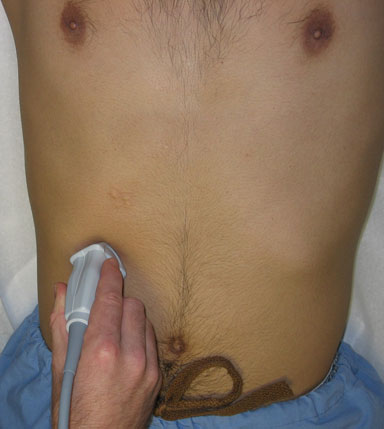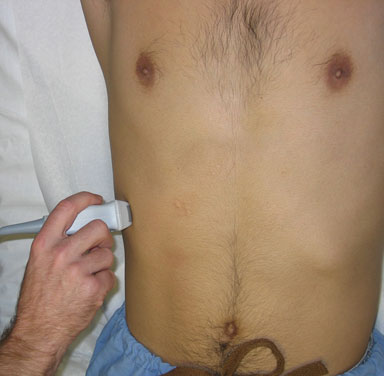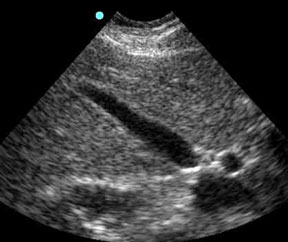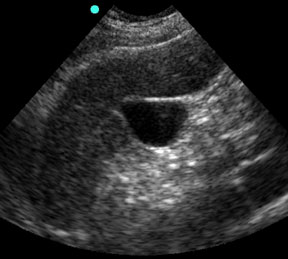Introduction:
Bedside sonography can greatly enhance the evaluation of patients with suspected cholecystitis. Findings of gallstones or a sonographic Murphy sign (maximal tenderness when pressure is applied over the visualized gallbladder) increase the likelihood of cholecystitis. Other sonographic findings which can sometimes be seen include gallbladder wall thickening (greater than 3 to 4mm is a commonly used cutoff), common bile duct dilatation (greater than 5 to 6mm), or the presence of pericholecystic fluid.
Focused Questions:
- Are there gallstones?
- Is there a sonographic Murphy sign?
- Are there other signs of acute cholecystitis?
- Gallbladder wall > 3 mm
- Common bile duct > 6 mm
- Pericholecystic fluid
Video Overview:
Required Views:
1. Longitudinal View of Gallbladder
2. Transverse view of gallbladder






